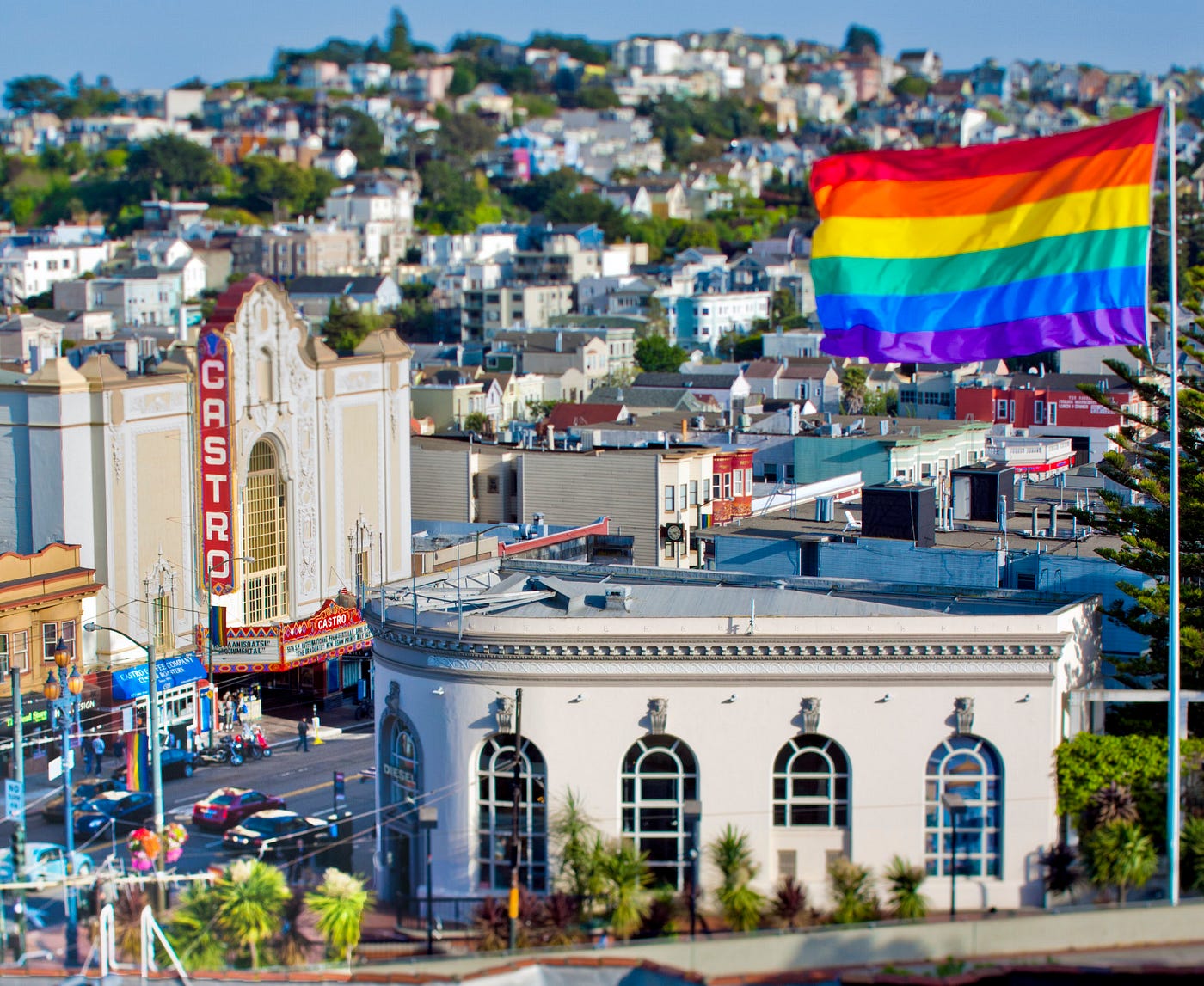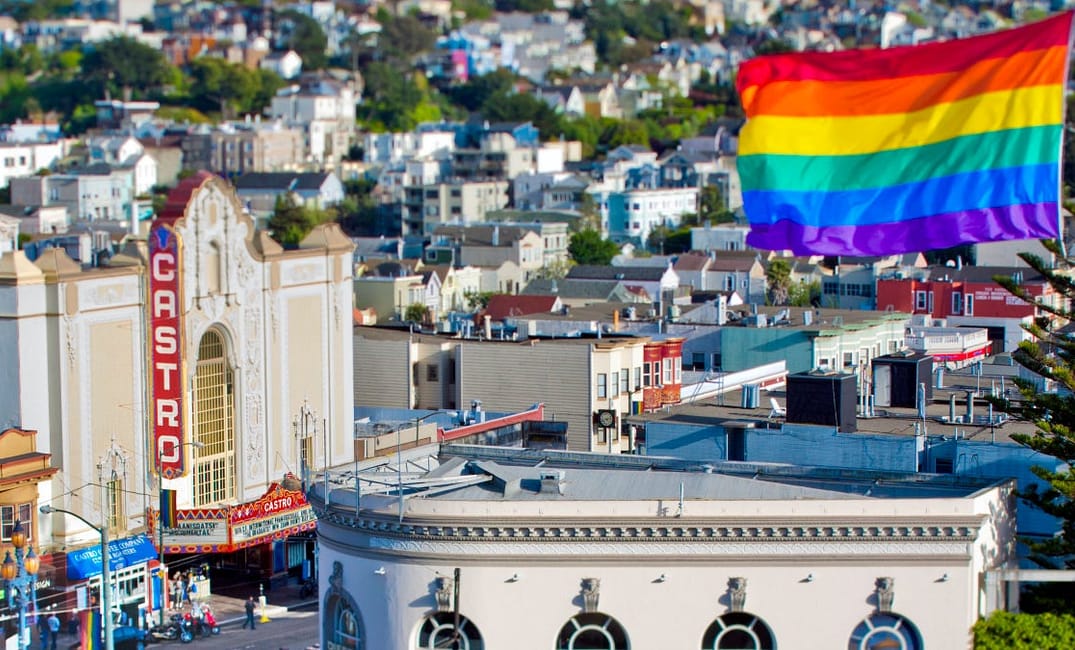
San Francisco and the larger Bay Area are known as a mecca for the queer community, a place that’s home to thriving gay communities, a history of important LGBTQ activism, extravagant Pride celebrations, and rainbow “Safe Place” stickers in the windows of local businesses.
While these things are true, so is the fact that we are not immune to threats against the LGBTQ community. From crimes by anti-LGBTQ hate groups to housing prices pushing residents out and everyday homophobia, real dangers exist here no matter what San Francisco’s reputation is. Glossing over or ignoring them in favor of seeing only our reputation through rose-colored glasses does our queer communities a disservice.
Sign up for The Bold Italic newsletter to get the best content about life in the Bay Area in your inbox every week.
“We shouldn’t think naively about how progressive or leftist our community is — there are still many people here who have outright hate for certain communities,” says queer resident and community leader Adrienne Keel.
Keel is the program director at San Jose’s LGBTQ Youth Space, which provides free mental health services and other resources to queer teens and young adults ages 13 to 25 in Santa Clara County. The center made news last year when vandals smashed in the organization’s door and windows during Pride month. It’s unclear if the action was motivated by hate, but it was the only building targeted in the incident. “We’re very fortunate that that was the only time that something like that has ever happened to our building,” Keel says.
Like anywhere in the United States, the young people who walk through the downtown San Jose nonprofit’s doors experience varying degrees of acceptance and rejection from family members and others in their communities.
The high cost of living in San Jose and throughout the Bay also plays a prominent role in the struggles that queer individuals face in the region, Keel said. Young adults in the Bay Area often continue living with family at an age when they might otherwise move out, due to the prohibitively high cost of living, but this is only feasible for those whose families are supportive and respect their identities.
It’s important to recognize that the experiences of queer Bay Area youth can still be extremely difficult, no matter how much progress we’ve made, and that these experiences are heard and validated.
“We need to listen to individual experiences and step up our game in terms of how we are supporting marginalized communities,” Keel says. “It’s so easy to look at other places in our state and country and scoff at how behind they are, but it’s important to remember that the Bay Area is not 100% safe for everyone. It’s so easy to say that stuff doesn’t happen here anymore, but it does.”
I reached out to other LGBTQ Bay Area dwellers to see what challenges they face as queer people in a place that is viewed as a monolith of liberal hippies and hipsters. Turns out, they agree that San Francisco, while welcoming in many ways, and more so than other cities, still isn’t the complete queer utopia many expect.
“You still have small pockets of homophobia and aggressive actions towards the LGBTQ community,” says Dave Karraker, who has lived in San Francisco for the past 25 years. “I remember when Prop 8 passed in 2008, there was a rash of drive-by beatings of gays in the Castro. We actually handed out whistles to people to help as a neighborhood watch program. It was a frightening time, stirred by conservatives and extreme right-wing organizations.”
Despite the pockets of hate, however, Karraker says he largely feels accepted by both the gay and straight communities he’s part of in San Francisco.
“Folks from outside the city view San Francisco as a shining gay beacon on the hill based on its history and place in gay culture,” he says. “I think at San Francisco’s heart is a caring, creative, revolutionary, progressive city. The heart of what made San Francisco that shining beacon, not just for gays, but for artists, and activists, and progressive thinkers is always there, bubbling just under the surface.”
On the outskirts of that shining gay beacon, young people can still struggle to find their place. Personally, I struggled to come out as bisexual to my family who live in San Jose. They identify as politically liberal but aren’t as accepting when it comes to their daughter’s sexuality. A high school classmate of mine, Samantha Nugent, who identifies as queer, moved away from San Jose after spending the first 19 years of her life there. Like me, Nugent didn’t come out until college. She attributes that to the lack of representation around her while she was growing up.
“While the Bay Area is LGBTQ+ friendly, it wasn’t really displayed anywhere in San Jose,” she says. “It wasn’t until high school that I knew that I could be anything other than straight. Heterosexuality didn’t just seem like the norm — it seemed like the only option out there.”
Lifelong Bay Area resident Johnny Righini, a 38-year-old trans man, “prefers existing as just human without gender attachment as a primary factor to his identity.” His entire family, except for his mother, disowned him when he came out as transgender 22 years ago.
“Sadly, hate exists everywhere,” he says. “I have been verbally attacked, harassed, followed home, and threatened for being a trans person who passes as either a ‘cisgender gay male’ or ‘trans woman.’ There is much inclusivity educational work left to do all over this world, including the Bay Area.”
In Righini’s opinion, the positive perception of the allyship in the Bay Area glosses over the very real struggles that are still occurring in the community.
“I feel the world glamorizes Pride in the Bay Area and fails to acknowledge the fact thatnoplace is truly safe for LGBTQAIP+ community members, especially trans people — with Black and IPOC trans women being at the highest risk of abuse and hate crimes,” Righini says.
Still, he finds hope and solace in the online and offline chosen families he’s built.
“I have a wonderful close-knit circle of trans, queer, kinky friends who love and accept me for who I am,” Righini says. “I’m also blessed with an amazing e-family through my social media spaces.”
As queer citizens of the Bay Area, we can and should continue to expect more from our community. We have made progress, but the fight isn’t over.







